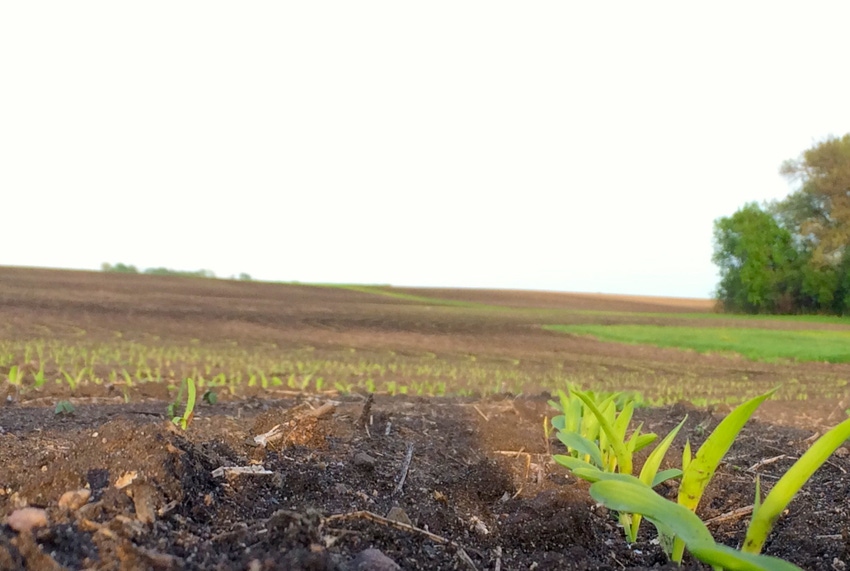May 23, 2016

In mid-April, it appeared that 2016 might be another ideal planting and growing season in the Upper Midwest, similar to 2015. However, after the encouraging start to the growing season in April, there have been several crop challenges across the region, including delayed planting, poor emergence, and frost damage. Fortunately, a bit more favorable weather during the week of May 16-21 has helped improve the crop conditions in many areas.
Very cold temperatures settled across the Upper Midwest from May 14-17, with widespread frost damage occurring across most of Minnesota and northern Iowa, as well as North and South Dakota, on the mornings of May 14 and 15. The frost damage ranged from light to severe, damaging only portions of fields in some areas, and nearly all fields in other areas. Much of the early-planted corn that had emerged received light to severe leaf damage on newly emerged corn. Most of this corn should recover, since the growing point on smaller corn plants was still below the soil surface.
In areas that had very favorable planting conditions in late April, a considerable amount of soybeans were planted in some locations. The soybeans that were emerged and received significant frost damage will likely need to be replanted. There were reports of thousands of acres of soybeans needing to be replanted in portions of southeast Minnesota and northern Iowa. One positive with replanting soybeans, it is early enough to replant and still get close to optimum yields in 2016. Sugar beets that were emerged, alfalfa, and other early-planted crops were also impacted by the frost damage.
Producers are encouraged to be patient with crop recovery from frost damage, as it takes a few days for new growth to appear, especially with the cooler temperatures that were experienced the first few days following the frost. Growers also need to be certain that the injury they are evaluating is frost damage, and not crop injury from other causes. Some corn has shown yellowing from the extended period of colder weather and cool soil temperatures in early May. Those weather conditions have also lead to some injury symptoms on newly emerged soybeans that were treated with pre-emergence herbicides.
Most of the corn replanting that has been occurring has not been due to the frost damage, but rather the result of the cool, wet soil conditions, and below average temperatures, that persisted throughout the first half of May. Some of the corn that was planted in late April, just prior to this weather pattern, has struggled with poor germination and uneven emergence, which has resulted in some growers replanting a portion of their corn. There may be some reduction from optimum yields when planting corn around May 20; however, yield prospects should still be very good in most areas.
An ongoing challenge in a large portion of southwest Minnesota, northwest Iowa and southeast South Dakota has been the continuing saturated field conditions that prevented much planting progress in the first half of May. Some parts of this region, received 6-8 inches of rain in late April and early May, which totally shut down any fieldwork for about three weeks. In some areas of this region, only a small percentage of corn was planted by May 18, and virtually no soybeans. Very wet conditions have also delayed planting in portions of Indiana and Ohio. Fortunately, a drier weather pattern set in the week of May 15-21, and many growers in the very wet areas were able to return to the fields by May 20 to get some corn and soybeans planted. However, another above normal precipitation pattern is likely across the region during the week of May 22-28.
If crop producers have questions or concerns on frost damage, herbicide injury, or other early season crop issues, they are encouraged to contact their crop consultant or agronomist for assistance. The University of Minnesota Extension website also contains some useful information on these topics.
Overall, the earlier planting dates for corn and soybeans in most areas should be a positive for 2016 crop yield prospects. However, the inconsistent early growing season, together with the very wet conditions in some areas, will likely have an impact on overall statewide and national crop yields for the year. In the Upper Midwest, conditions in the early growing season of 2016 have not been as favorable as in 2015, when Minnesota, Iowa, and other States achieved record corn and soybean yields.
About the Author(s)
You May Also Like




